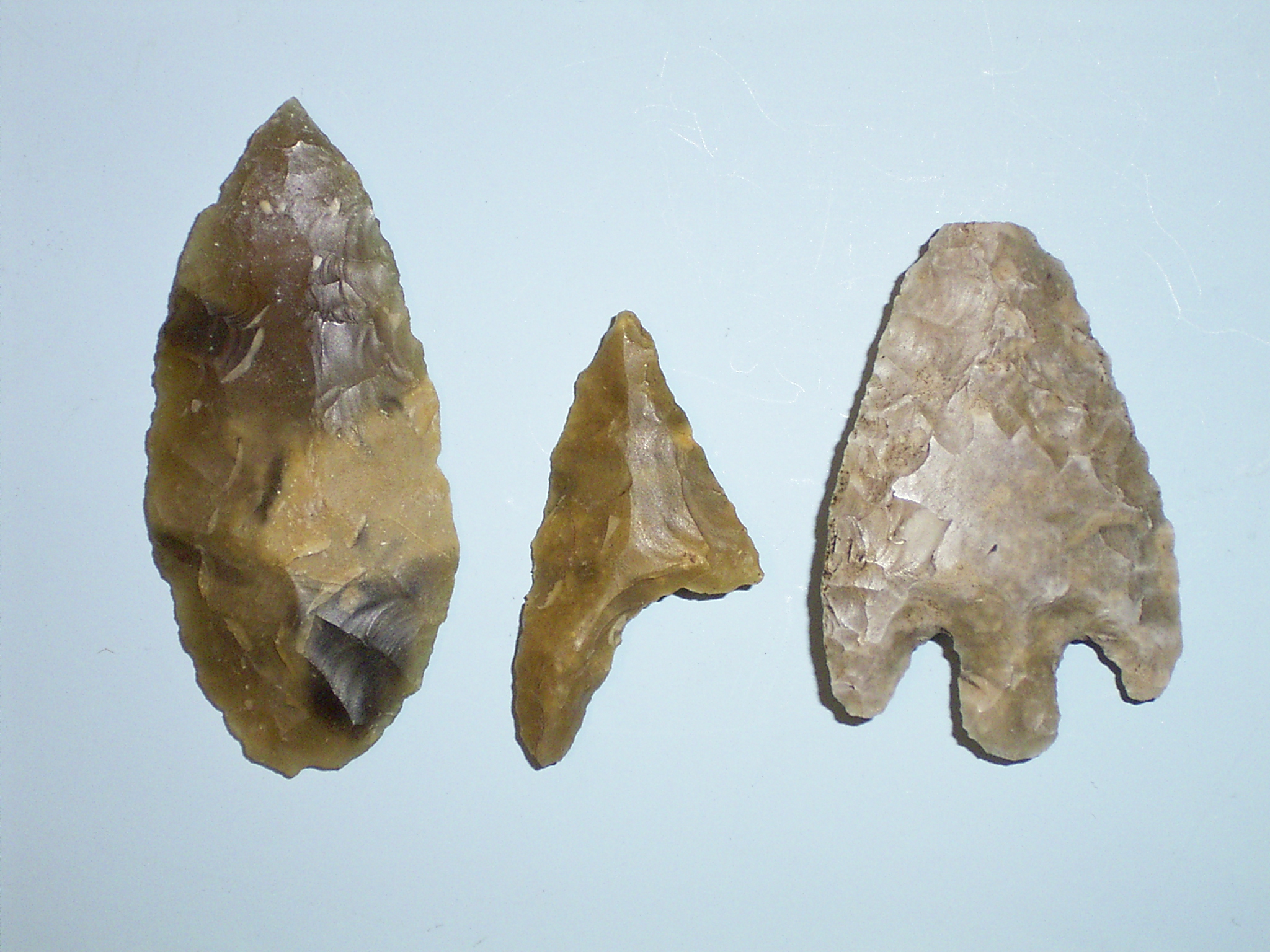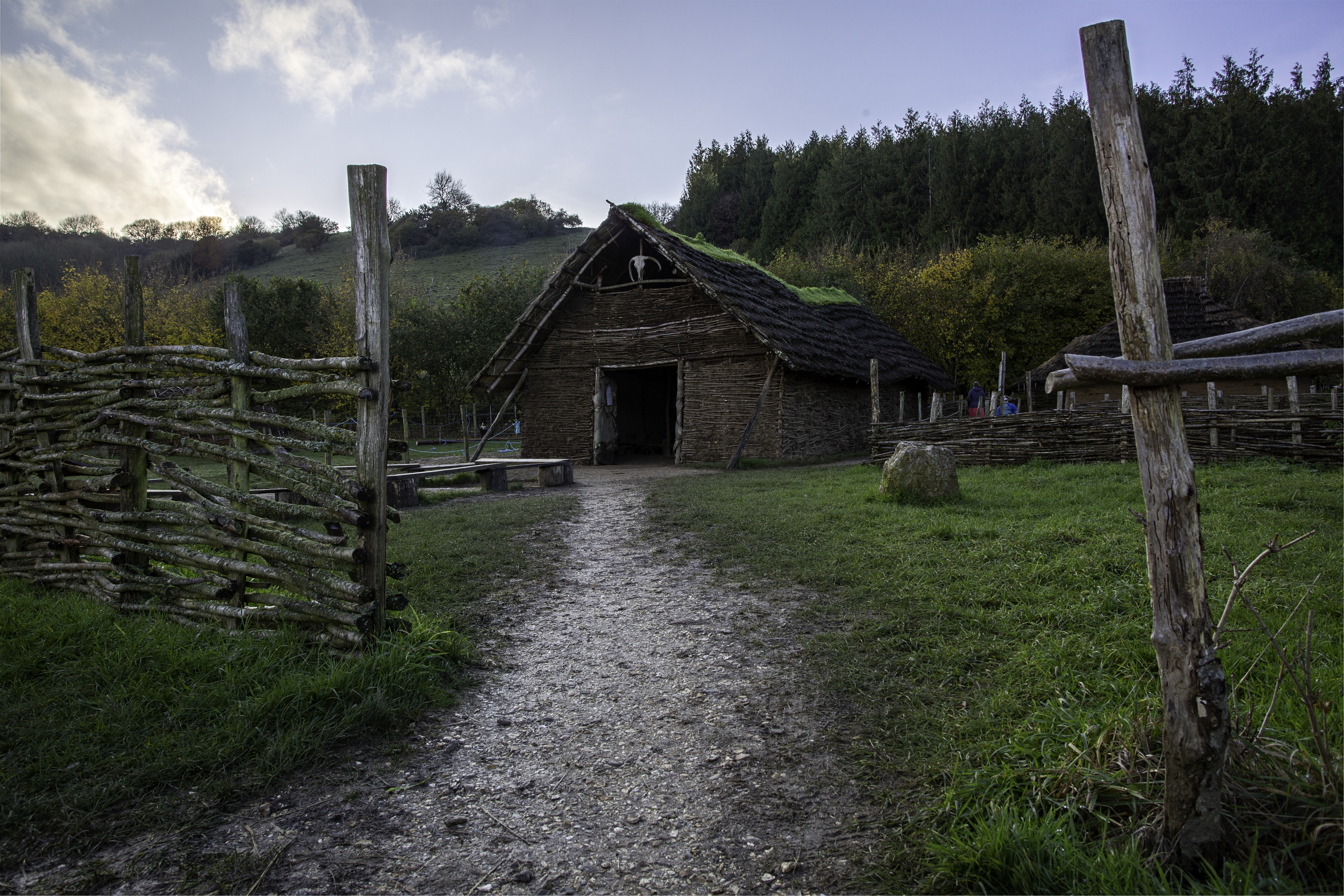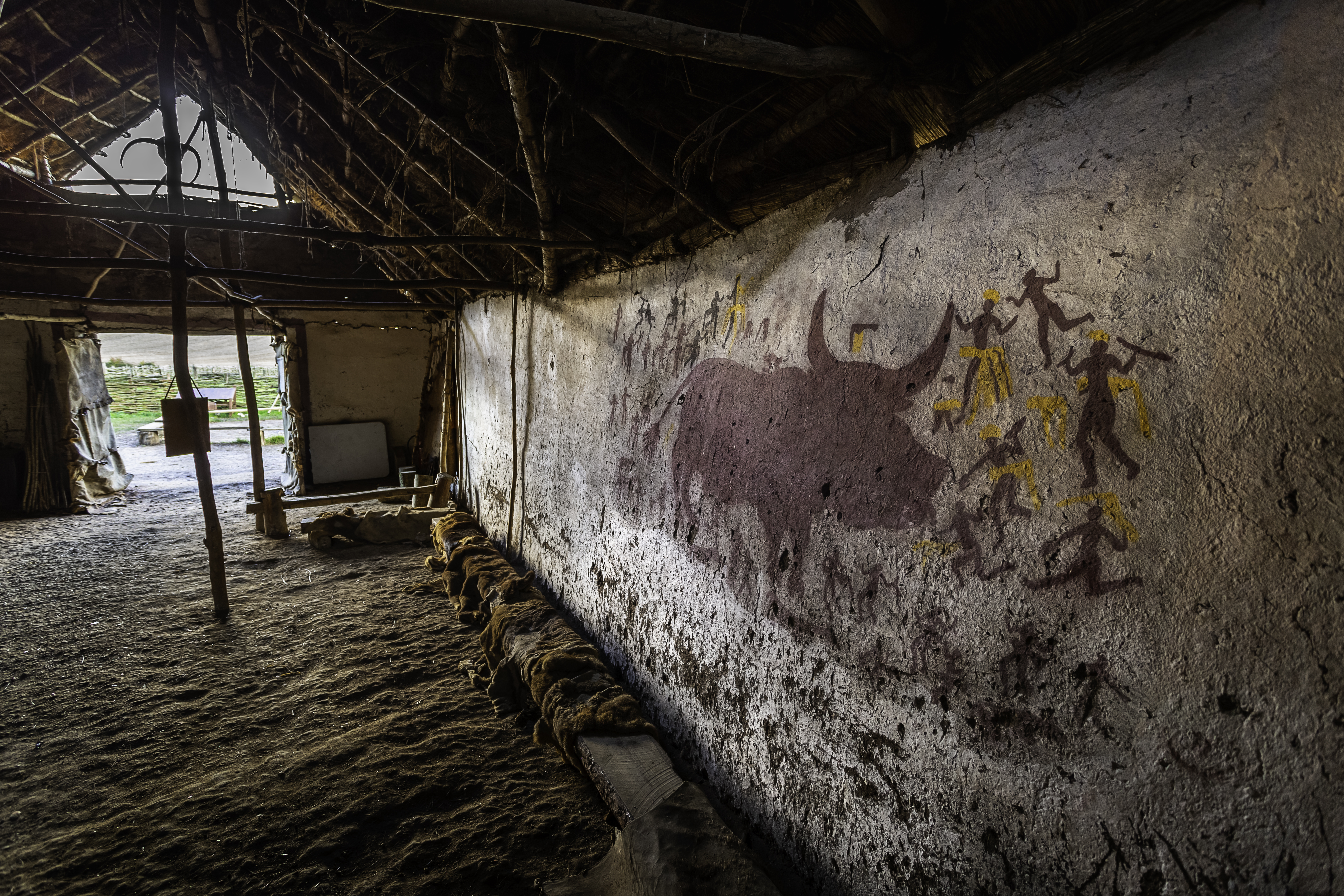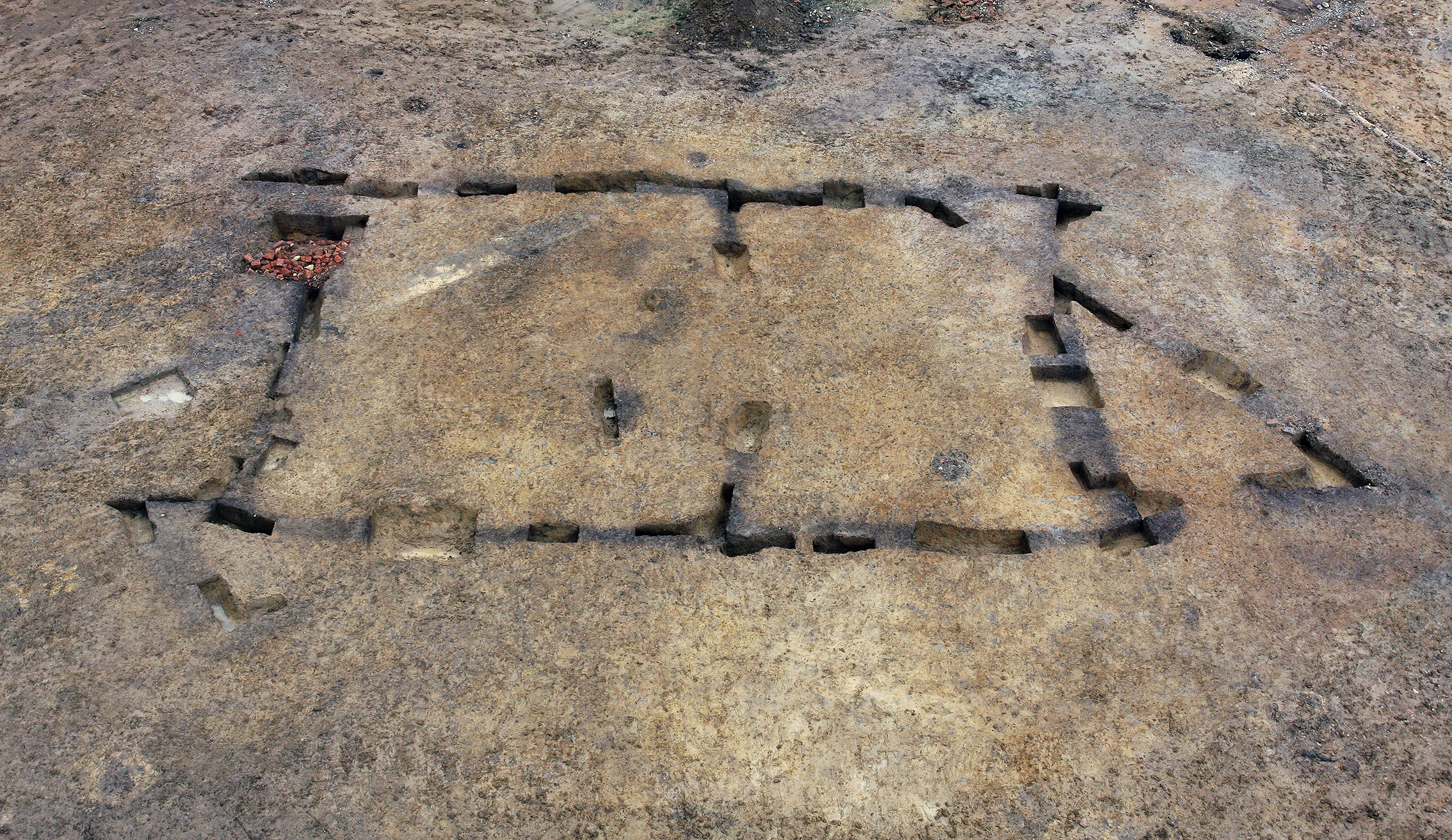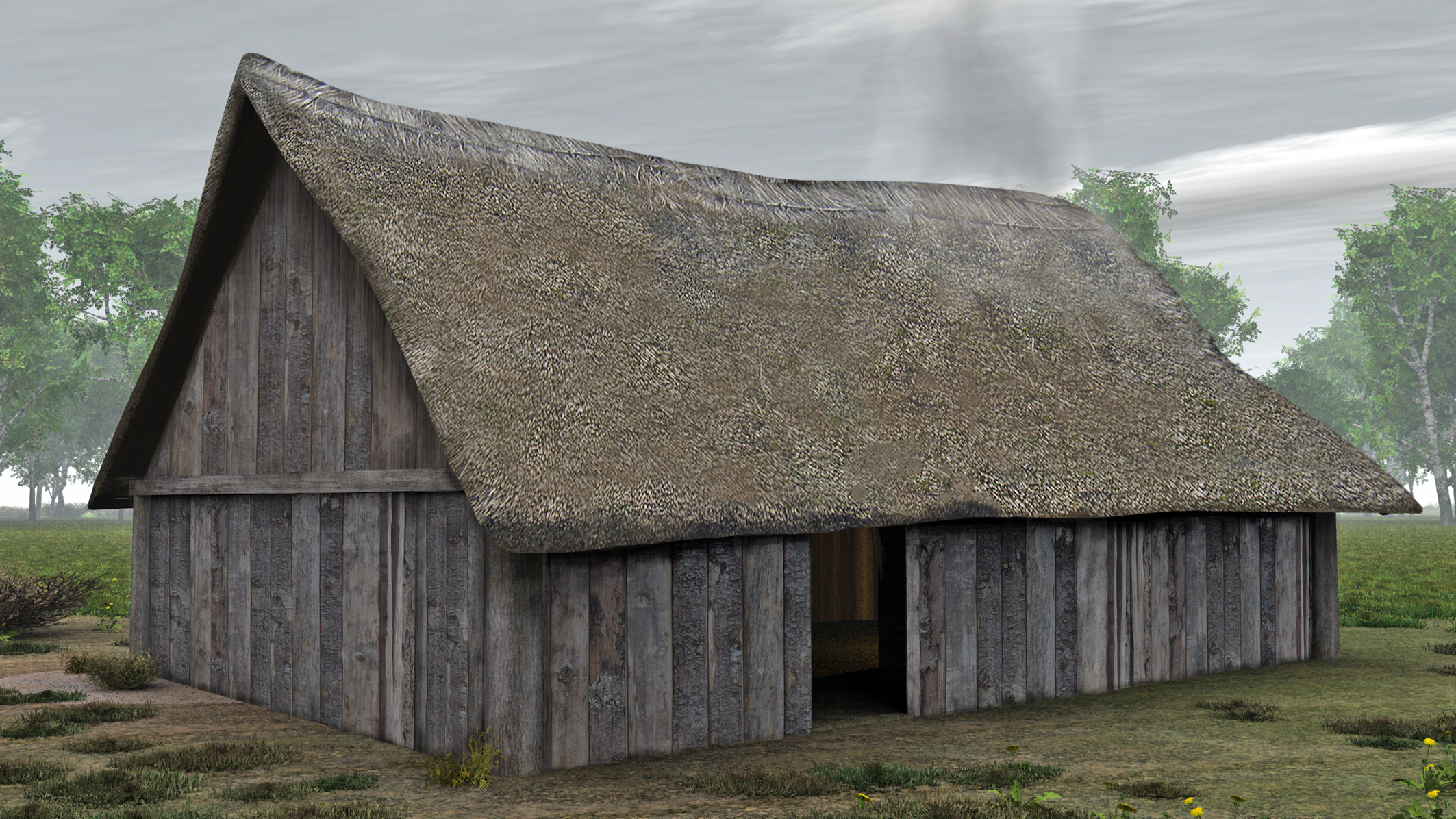The Stone Age is the first period of prehistory, when the first human ancestors began to make and use stone tools.
There is debate as to precisely when the Stone Age began in the corner of the world that we now call Britain. The earliest evidence of humans living in Britain dates back to 900,000 years ago, with the earliest stone tools found in Happisburgh, England. They would appear every now and then in warmer periods between Ice Ages until around 9500–4000 BC, when the first hunter gatherers permanently settled in Britain. The Stone Age ended around 4,000 years ago when the Bronze Age began.
We might ask ourselves, before the invention of boats, how did our Stone Age ancestors arrive in Britain in the first place? Up until around 6,500 years ago, Britain was not an island like we know it today. Instead,
Britain was attached to continental Europe by a land bridge, meaning that Stone Age people could walk freely between Britain and Europe.
The Stone Age is divided into three main periods: the Paleolithic, the Mesolithic and the Neolithic.
Paleolithic
The Paleolithic period is the first period of the Stone Age and is defined by when the invention and use of basic stone tools started. This was also the first time that our Stone Age ancestors began to make art.
Paleolithic is a word that comes from the two Greek words palaios, meaning old, and lithos, meaning stone.
Mesolithic
The Mesolithic period began in the middle of the Stone Age. After one of many warming periods, there was an increase in Britain’s plant diversity, attracting new forms of wildlife which encouraged humans to stay for longer periods. With these changes, Mesolithic people developed their Stone Age technology accordingly (e.g., sharper, more precise tools).
Mesolithic people would settle in different parts of Britain depending on the season, following the food supply.
Mesolithic is a word that comes from the two Greek words mesos, meaning middle, and lithos, meaning stone.
Neolithic
The Neolithic period, the final period of the Stone Age, saw the first basic crop farming, eg wheat and keeping of livestock, like pigs in Britain. Shifting away from many aspects of the hunter gatherer lifestyle, Neolithic peoples were less nomadic than previous Stone Age ancestors. With time, Neolithic technology became more advanced.
Neolithic is a word that comes from the two Greek words neos, meaning new, and lithos, meaning stone.
Stone Age Houses
It’s not uncommon, when thinking of The Stone Age, to imagine families living together in caves. However, in Britain, this was not quite true – mainly due to the very small number of caves in Britain at the time! Our hunter gatherer ancestors were mostly nomadic, meaning that they frequently travelled from place to place to find new sources of food, with no fixed home. That said, recent discoveries of Stone Age buildings suggest that some of our hunter gatherer ancestors settled during their lifetimes.
These buildings were made from a variety of materials, depending on location, and availability of material. One example of an early Stone Age building, mostly used during the Mesolithic era (around 15,000 BC), was a conical hut-like structure supported by timber poles. Evidence suggests that the floors of these buildings were insulated with a layer of moss and soft plants, and they may have used animal skin to cover the timber frame.
The image above shows the post holes of a Neolithic house that has been excavated by archaeologists. There is a surprising amount of information that can be gained from a site such as this, and a reconstructed hut built using this information can be seen in the next image below.
This image shows a reconstruction of what the Neolithic house might have looked like that would have stood on the site of the excavated post holes.
There are multiple options for how it could have looked, so archaeologists had to make a decision on the interpretation of the remains they found. It was built as a collaboration between field archaeologists (those that excavate in the field) and experimental archaeologists (those who try and recreate prehistoric artefacts using tools and knowledge from the time period).
In the Neolithic era, larger rectangular houses made from timber with a roof of reeds or grass were more frequently occupied. These kinds of houses would not have had a chimney, instead smoke would seep out through the roof, that was high enough to not catch alight from sparks.
Other examples of Neolithic buildings can be found on sites such as Skara Brae in the Orkney Islands, where buildings were made from stone.
